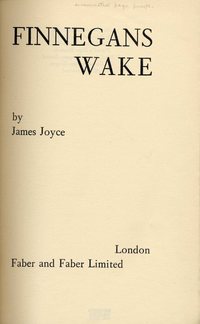#FinnegansWake
Finnegans Wake
Finnegans Wake is a novel by Irish writer James Joyce. It is significant for its experimental style and reputation as one of the most difficult works of fiction in the English language. Joyce, Joyceans, and the Rhetoric of Citation, p 3, Eloise
Read More..
by James Joyce
Ratings
Likes
Reviews
Popularity
Ranks
This #hashtag is not ranked yet.

